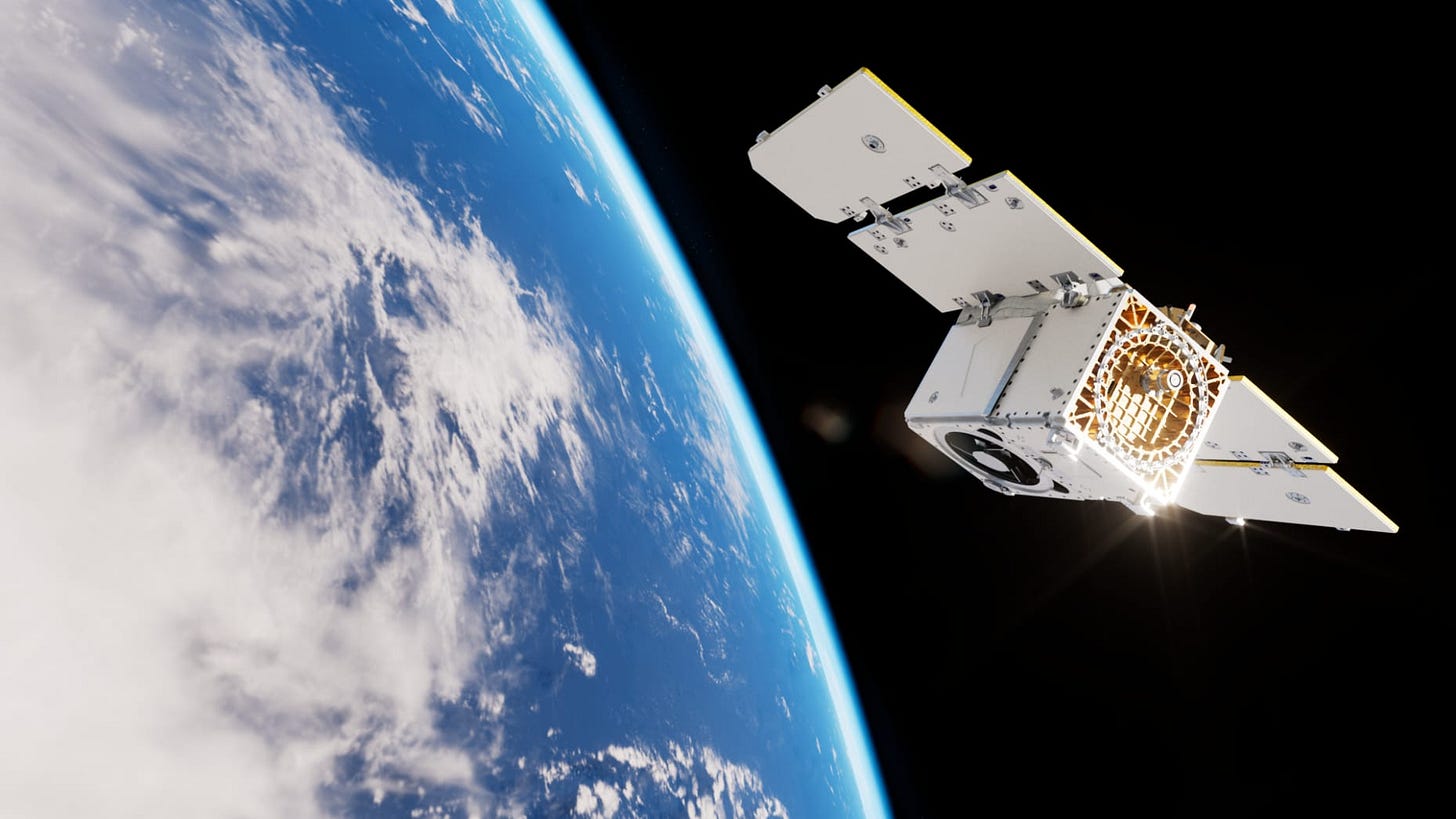Southeast Asia Space Roundup: 30 January to 5 February 2025
A summary of all the space news in Southeast Asia over the past week, brought to you by AzurX
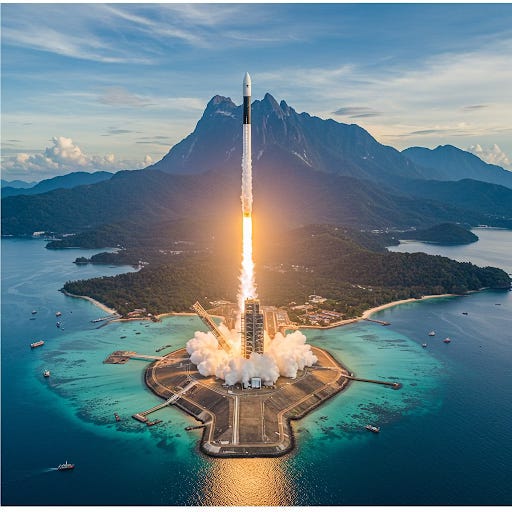
The following are the major space developments in the Southeast Asian region tracked by Southeast Asia Space Monitor over the past week:
Malaysia Space Developments
Malaysia’s Quest to Build a Space Launch Site in Sabah
Sabah, a state in Malaysia, is positioning itself as Southeast Asia’s emerging hub for satellite assembly and space launches, leveraging its strategic equatorial location and extensive coastline. The state government has initiated a one-year feasibility study, partnering with Ukraine’s Yuzhnoye State Design Office and local aerospace firm Sovereign Sengalang to explore its potential as a regional launch site. With projected annual revenue of $45.5 million and the creation of 5,000 jobs, the initiative aligns with Malaysia’s National Space Policy 2030. However, experts emphasize that success hinges on developing a skilled aerospace workforce, securing significant foreign investment, and addressing Sabah’s longstanding infrastructure challenges. Industry leaders argue that Malaysia’s existing aerospace expertise—supplying Boeing and Airbus—provides a strong foundation for space industry growth. While regulatory and funding support from federal and state governments will be critical, Sabah’s ambitions, if well-executed, could establish it as a key player in Asia’s space sector, potentially attracting major investors such as SpaceX.
Regional Official: Subsidies Required to Provide SATCOM in Malaysia’s Sabah to Bridge Digital Divide
In Malaysia’s Daily Express, regional official Yahyah Sidek writes that Sabah's digital divide remains a persistent challenge due to its rugged geography, infrastructure gaps, and economic disparities, particularly in rural and remote areas. While urban centers like Kota Kinabalu benefit from robust internet connectivity, many interior regions still lack reliable access. Recent initiatives, including government-backed programs and private-sector efforts, have led to some progress, with villages such as Kg Bilangau Besar now accessing 4G services. However, many others remain disconnected. Satellite internet, particularly services like Starlink, presents a viable solution by bypassing the need for extensive terrestrial infrastructure. These services can rapidly deliver broadband to remote communities, ensuring access to essential services such as education, healthcare, and government programs. However, cost remains a significant barrier, with expensive equipment and high service fees limiting adoption in low-income areas. Additional challenges include weather susceptibility, bandwidth constraints, and latency issues. Government intervention, such as subsidies under Malaysia’s Jendela program and community-based cost-sharing models, could enhance affordability and accessibility. By integrating satellite technology into national digital inclusion strategies, Sabah could accelerate its progress in bridging the connectivity gap, fostering economic growth and social development across underserved regions.
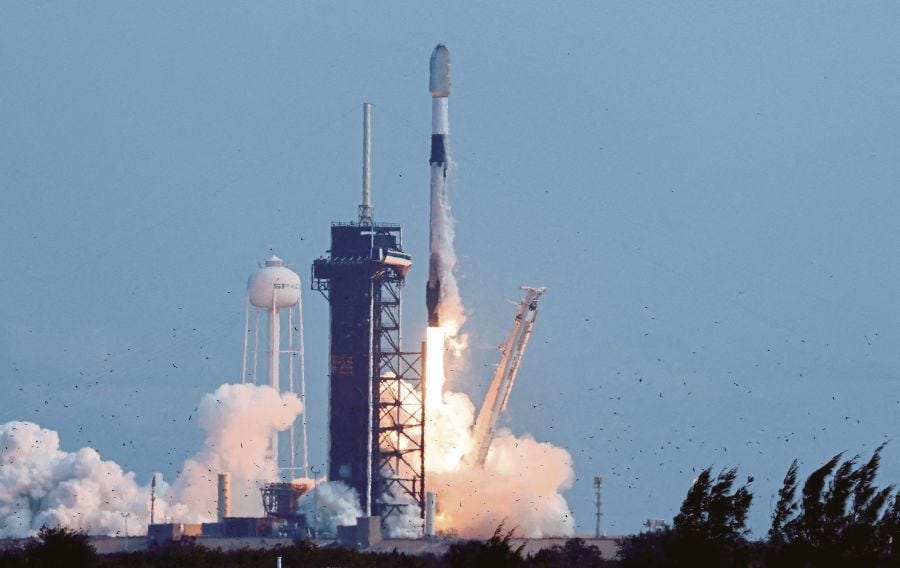
Prominent Expert: Malaysia Should Lead the Way for ASEAN Space Initiatives
In the New Straits Times, Zakri Abdul Hamid writes that Malaysia’s Science, Technology, and Innovation Minister Chang Lih Kang has proposed a major Association of Southeast Asian Nations (ASEAN)-led initiative in the space economy, aligning with Malaysia’s 2025 ASEAN chairmanship. With the global space economy valued at $596 billion in 2024 and projected to reach $1.8 trillion by 2035, ASEAN countries must strategically position themselves to benefit from emerging space technologies, particularly satellite communications, remote sensing, and space applications. Science diplomacy will be key in fostering collaboration with global space agencies, securing technology transfers, and shaping international space regulations to ensure fair access to orbital resources and mitigate monopolization by major space powers. ASEAN’s engagement in space governance will also drive local economic benefits, such as improved climate monitoring, disaster management, and connectivity in rural areas through satellite broadband. However, challenges remain, including the need for coherent space policies, investment in indigenous capabilities, and regulatory frameworks to facilitate foreign direct investment. Malaysia’s space agencies, including the Malaysian Industry-Government Group for High Technology (MIGHT) and the Malaysian Space Agency (MySA), must now act on this proposal to map out resource requirements and integrate ASEAN’s space ambitions with broader sustainable development goals.
Philippines Space News
Philippines House of Representatives Adopts Resolution to Allow Starlink to Establish Satellite Ground Stations
The Philippine House of Representatives has adopted House Resolution No. 2207, granting provisional authority to Starlink Internet Services Philippines Inc., a subsidiary of SpaceX, to establish and operate satellite ground stations while awaiting formal legislative approval. This decision, supported by key lawmakers including Bataan Rep. Albert Garcia, Albay Rep. Joey Salceda, Ilocos Norte Rep. Angelo Barba, and Senior Deputy Majority Leader Sandro Marcos, reflects the government’s prioritization of nationwide connectivity, particularly in remote and underserved areas. The resolution aligns with President Marcos’ digital transformation agenda, emphasizing satellite technology's role in bridging the digital divide for education, public services, and economic development. It also builds on Executive Order No. 127, which allows internet service providers to directly access satellite networks. With pending legislative bills (House Bill No. 10954 and Senate Bill No. 2844) facing time constraints, this measure ensures Starlink’s immediate deployment, reinforcing the Philippines’ commitment to leveraging space-based internet solutions for national connectivity and infrastructure growth.
Philippine Space Agency DG Prof. Marciano Appointment as Cabinet Secretary Deferred
The Philippine Space Agency (PhilSA) faced scrutiny during the Commission on Appointments (CA) hearing, leading to the deferment of Director General Joel Joseph Marciano’s confirmation. Lawmakers, led by CA Majority Floor Leader Rep. Luis Raymund Villafuerte Jr., criticized PhilSA for lacking clear data on its contributions to agriculture and disaster mitigation, questioning its direct engagement with local government units (LGUs). While Marciano defended the agency’s role in providing satellite imagery to disaster response agencies such as the National Disaster Risk Reduction and Management Council (NDRRMC) and the Department of Environment and Natural Resources (DENR), Villafuerte emphasized the need for PhilSA to be more proactive and directly share critical data with LGUs. Concerns were also raised about Marciano’s qualifications, with Villafuerte urging him to accelerate his expertise in space technology. Senator Cynthia Villar called for a detailed report on PhilSA’s strategic role in agriculture and disaster management. Villafuerte further demanded that PhilSA prepare climate-risk data for flood-prone provinces in the Philippines and ensure its integration into national infrastructure planning. The deferment signals a push for PhilSA to demonstrate its relevance, improve its operational transparency, and align its satellite capabilities with national priorities.

The Philippines Positions Itself as a Space Tourism Destination
As the commercial space tourism industry accelerates, post-orbital luxury hospitality is emerging as a key sector, with the Philippines positioning itself as a premier destination for high-net-worth individuals returning from space. Jeff Bezos’ Orbital Reef, a planned $100 billion luxury space station set to launch in 2027, underscores the growing demand for extraterrestrial travel experiences, complementing ongoing spaceflights by Virgin Galactic. However, while the cost of space tourism currently ranges from $450,000 to $900,000 per seat, the industry is evolving beyond the journey itself, extending into elite post-mission relaxation and entertainment. The Philippines is strategically leveraging this trend by offering world-class hospitality, privacy, and investment opportunities to space tourists. With 7,000 islands, luxury resorts, private islands, and state-of-the-art wellness retreats, the country provides an ideal setting for billionaires seeking seclusion and rejuvenation after space travel. Additionally, its growing gaming sector and reputation as a leading investment hub in Southeast Asia make it attractive for affluent visitors exploring business opportunities in technology, renewable energy, and sustainability projects. As space tourism becomes more mainstream, destination branding for post-spaceflight experiences is likely to gain traction. With its blend of natural beauty, exclusive luxury, and investment potential, the Philippines is emerging as a frontrunner in catering to the next wave of space travelers, positioning itself at the intersection of space exploration, hospitality, and economic expansion.
Indonesia Space Developments
Indonesia-Russia/EAEU Free Trade Agreement Will Include Space Cooperation
Russia is looking to strengthen space cooperation with Indonesia as part of its broader economic and technological collaboration under the anticipated free trade agreement between Indonesia and the Eurasian Economic Union (EAEU). Russian Foreign Minister Sergey Lavrov emphasized that space exploration is among the key areas for mutually beneficial initiatives alongside energy, agriculture, and transport. The growing partnership is facilitated by the Russian-Indonesian joint commission on trade-economic and technical cooperation, which supports bilateral projects across high-tech industries. As Indonesia expands its ambitions in satellite technology and space exploration, collaboration with Russia could provide access to advanced space capabilities, including satellite development, launch services, and space science initiatives. With the free trade agreement expected to be finalized in 2025, the partnership has the potential to accelerate Indonesia’s space sector while strengthening Russia’s presence in Southeast Asia’s growing space economy.
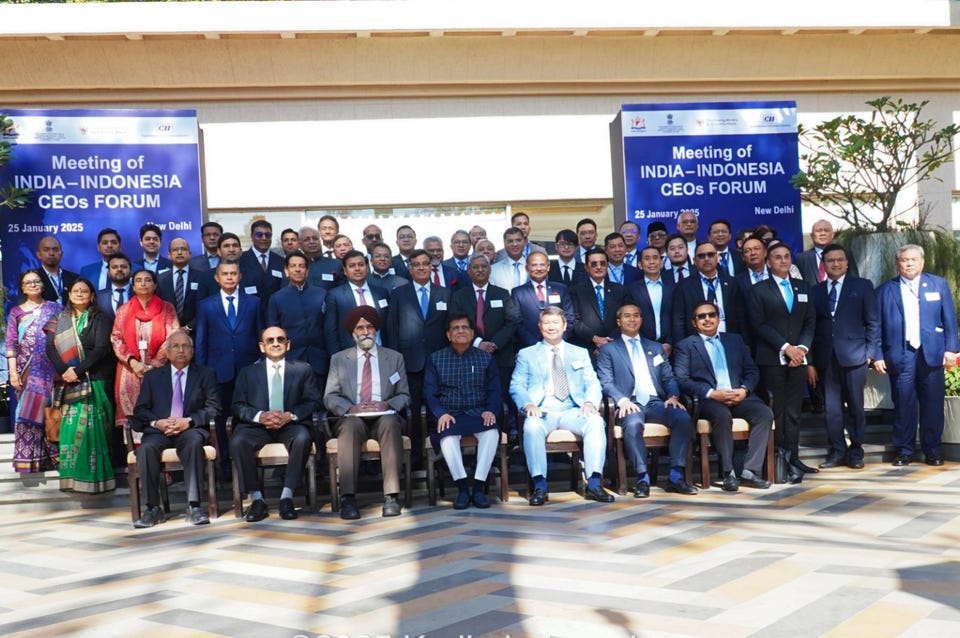
Indonesia and India Industry Facilitate Commercial Satellite Partnerships
Indonesia and India have strengthened their strategic collaboration in key economic sectors, including satellite technology, with the signing of a Memorandum of Understanding (MoU) between the Indonesian Chamber of Commerce and Industry (Kadin) and the Confederation of Indian Industry (CII). A notable development in the space sector is the partnership between Indonesia’s Nodeflux and India’s XDXLink, focusing on low-Earth orbit (LEO) satellite development, artificial intelligence for disaster mitigation, food security, and mine monitoring. This collaboration reflects the increasing role of satellite technology in addressing regional challenges. The India-Indonesia CEO Forum, attended by high-ranking officials, including Indonesia’s Special Envoy for Climate Change and Energy, Hashim Djojohadikusumo, and India’s Minister of Commerce and Industry, Shri Piyush Goyal, emphasized technological advancements, digital talent development, and economic cooperation. With Indonesia targeting the world’s seventh-largest economy by 2030 and India aspiring to become the third-largest, satellite and AI-driven solutions will be critical for sustainable growth. The forum’s outcomes, including discussions on strengthening bilateral trade and investments, were presented to Indonesian President Prabowo Subianto and Indian Prime Minister Narendra Modi, highlighting the significance of space technology as a pillar of future cooperation.
Singapore Space News
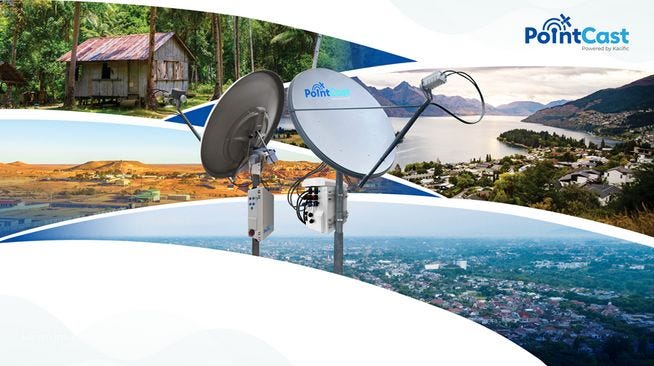
PointCast, Sub-Brand of Singapore’s Kacific, Unveils New VSAT for Remote Satellite Broadband Connectivity
PointCast, a sub-brand of Singapore’s Kacific Group, has introduced an autonomous, cost-effective motorized Very Small Aperture Terminal (VSAT) solution designed to revolutionize satellite broadband delivery for businesses, particularly in remote and underserved areas. By leveraging advanced self-pointing and calibration technology, the system significantly reduces installation complexity, cutting deployment times by up to 50% and minimizing reliance on skilled technicians, which traditionally drive up costs. Supporting both Ku and Ka-band satellites with dish sizes ranging from 75cm to 1.2m, PointCast caters to industries such as emergency response, mining, construction, government, and rural education projects. It offers high signal precision, cloud-based fleet management, and automated weather resilience, enhancing reliability and bandwidth efficiency. CEO Christian Patouraux emphasized that PointCast transforms VSAT deployment into a plug-and-play experience, drastically lowering costs while improving accessibility. Priced from $900, this scalable solution is poised to optimize network performance and operational costs, making satellite broadband more efficient for businesses worldwide.
Investors from Singapore Back India’s SATCOM Company Astrome Technologies
Singapore is playing a key role in the global expansion of deep technology startup Astrome Technologies, which recently secured $10 million in a funding round led by Apollo Fund, with participation from investors in India, Singapore, and the UAE. This investment underscores Singapore’s growing influence in the advanced wireless and satellite communications sector. Astrome, known for its innovations in millimeter-wave E-band radios and satellite communication products, aims to enhance 5G and rural telecommunication infrastructure. The funding will support the company’s market expansion, particularly in satellite communications, and facilitate partnerships with global original equipment manufacturers (OEMs). Its flagship product, GigaMesh, which integrates with optical fiber networks to support 5G and 6G connectivity, is poised for international deployment, reinforcing Singapore’s position as a hub for satellite-enabled connectivity solutions. The participation of Singaporean investors highlights the country’s strategic role in fostering next-generation telecom advancements and strengthening its position in the evolving global space and communication ecosystem.
Other Regional Space Developments
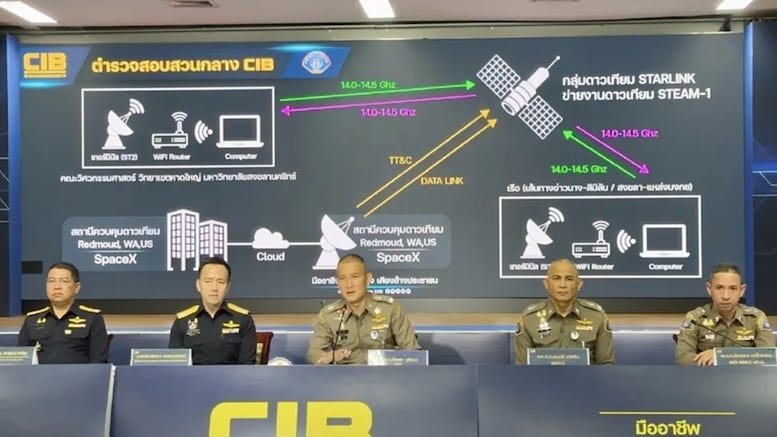
Myanmar Cyber Scammers Rely on Starlink SATCOM According to Regional Law Enforcement Agencies
Myanmar’s expanding scam operations along the Thai border have increasingly relied on Starlink satellite internet to sustain their activities, raising concerns among law enforcement agencies. Authorities in Thailand and China have identified Myawaddy as a major hub for cyber scams, with an estimated 300,000 scammers operating in the area. The use of Starlink satellite terminals has allowed these networks to maintain high-speed internet access despite efforts to disrupt traditional telecommunications infrastructure. Thai authorities, recognizing the role of satellite connectivity in facilitating illicit operations, are now considering measures to intercept and block the smuggling of Starlink receivers, antennas, and SIM boxes across the border. China, which has already conducted large-scale crackdowns on scam networks, is also increasing pressure to curb these operations, with Chinese officials visiting the region to coordinate efforts. Meanwhile, Thailand faces growing scrutiny over human trafficking linked to these scams, with calls to ensure that those tricked into working in scam compounds are treated as victims rather than criminals. As criminal enterprises increasingly leverage advanced satellite communication technologies, governments must adapt regulatory and enforcement strategies to mitigate their misuse while ensuring legitimate access to space-based connectivity solutions.
Vietnamese Ambassador to Russia Calls for Greater Vietnam-Russia Space Cooperation
Vietnam and Russia’s comprehensive strategic partnership, established in 1950, has expanded to include growing collaboration in space technology, alongside advancements in trade, defense, and scientific research. Vietnamese Ambassador to Russia Dang Minh Khoi highlighted space cooperation as a priority for future bilateral engagement, recognizing its potential to drive innovation and economic growth. Russia’s expertise in space exploration presents opportunities for Vietnam to enhance its satellite capabilities, advance Earth observation technologies, and develop joint research initiatives in biotechnology, AI, and renewable energy. With Vietnam positioning itself as a regional technology hub, increased cooperation in space research and infrastructure—such as satellite manufacturing and launch services—could strengthen the country’s role in ASEAN’s space ambitions. As both countries seek deeper engagement in multilateral space initiatives, they aim to integrate space-based solutions for economic development, disaster monitoring, and environmental management. Strengthening political trust, facilitating student exchanges in aerospace engineering, and fostering joint ventures in high-tech industries will further solidify their partnership. By leveraging Russia’s established space expertise and Vietnam’s emerging technological capabilities, both countries can play a more influential role in shaping the future of space cooperation in the Asia-Pacific.
Planet Secures $230 Million Contract for Pelican Earth Observation Satellites from Asia-Pacific Customer
U.S. Earth observation data and satellite company Planet has secured a $230 million contract with an undisclosed Asia-Pacific customer to expand its Pelican satellite constellation, marking its largest deal and a major step into satellite services. The contract funds satellite construction and five years of operation, with Planet retaining global data licensing rights. The Pelican-2 satellite, launched this month, features Nvidia’s Jetson AI platform for enhanced data processing. Financial benefits are expected from 2026, with revenue recognized over seven years. The deal boosted Planet’s stock and follows a recent multiyear contract with the European Space Agency. After financial challenges post-SPAC listing in 2021, Planet has rebounded, doubling its share value in the past year.
Be sure to catch up with space activities in the region in the next edition of Southeast Asia Space Monitor’s space roundup!





